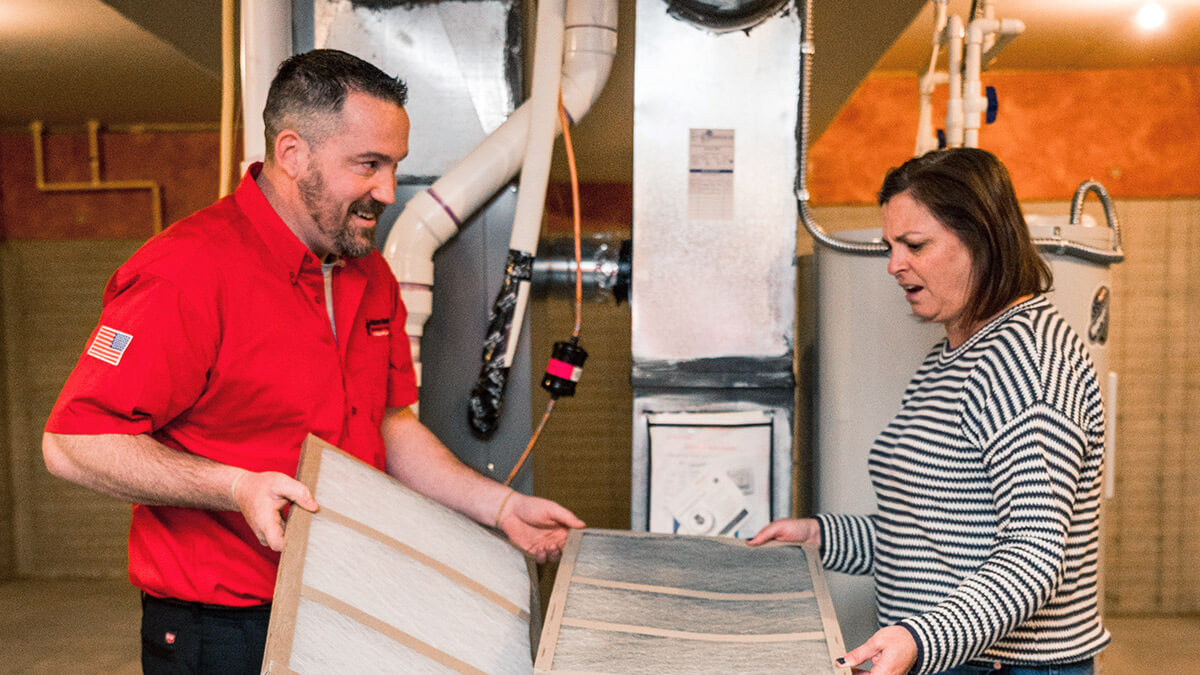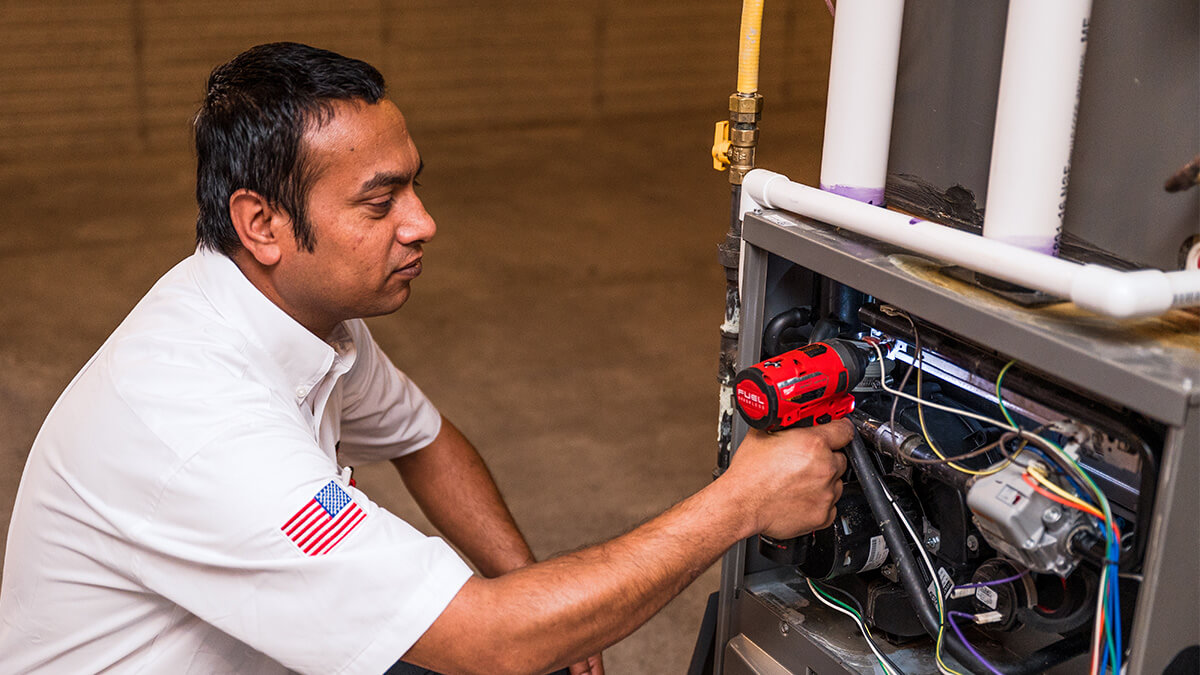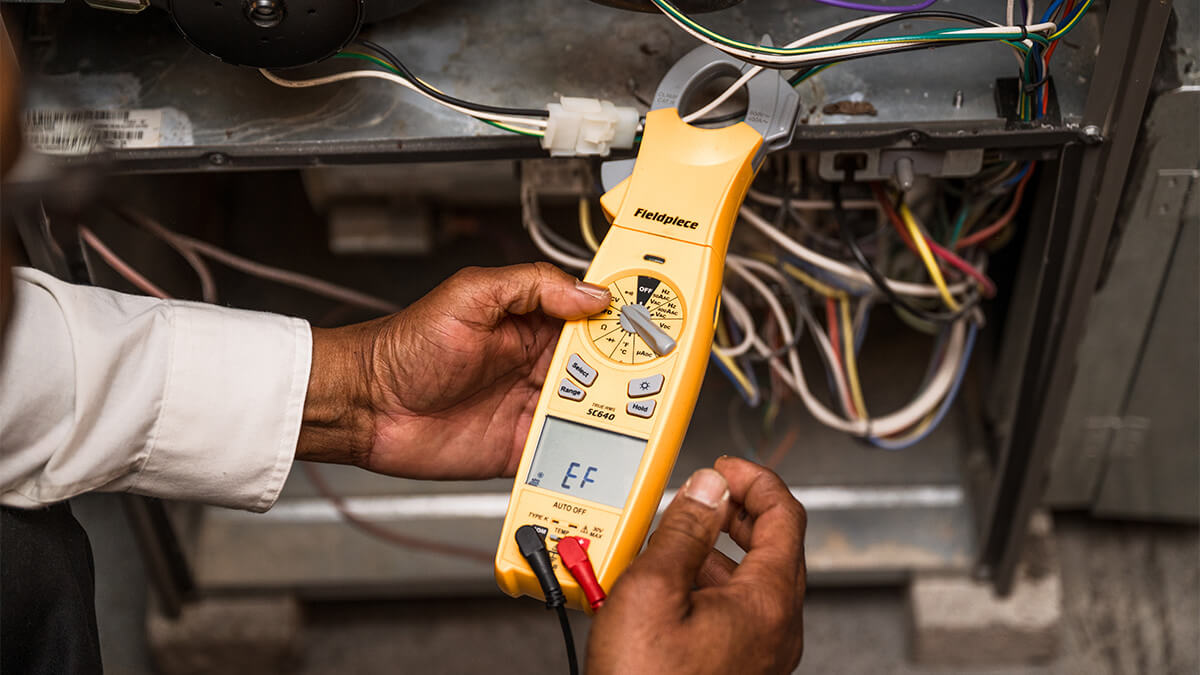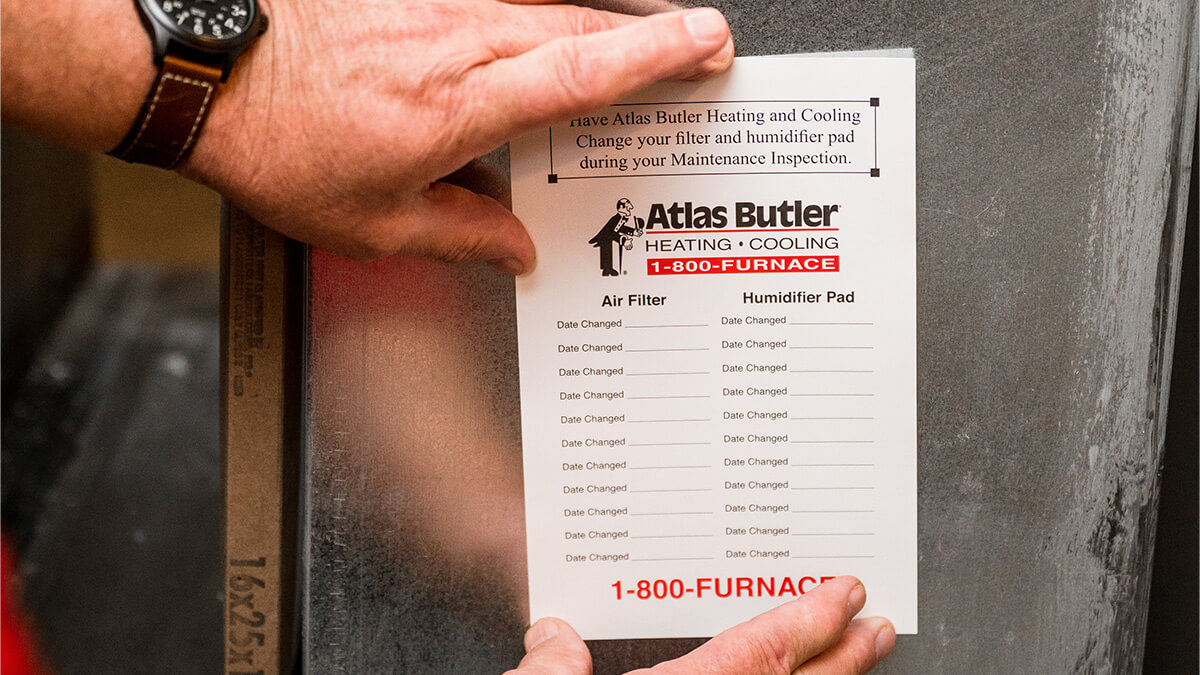Furnace Service & Repair for All Types of Furnaces
Just like a car, your heating system needs maintenance from time to time to ensure the system is operating safely and efficiently. The HVAC pros at Atlas Butler provide furnace maintenance and repairs and furnace replacements in Columbus and throughout Central Ohio to keep your home warm all winter.
Furnace Replacement
When it comes time to replace your old furnace, our HVAC advisors can help you choose the right furnace for your home and then hand it off to our team of experienced technicians who will install your new furnace quickly. Your comfort is our top priority, especially during the cold weather months in Central Ohio.
Furnace Repair & Service
Our experienced furnace technicians are reliable professionals that can repair and service any kind and any brand of furnace.
We Service All Types of Furnaces:
- Electric Furnaces
- Natural Gas Furnaces
- LP Gas Furnaces
- Heat Pumps
Furnace Maintenance
Our furnace techs will test the components of your furnace, make sure the inside is clean and free of debris and moisture, and test that the furnace fires up when communicating with the thermostat. Scheduling a furnace maintenance in the Fall will ensure a stress-free and warm home all winter long.
- Thermostat operation inspection
- Filter inspection
- Blower motor inspection
- Blower wheel inspection
- Burners inspection
- Electrical connection inspection and tightening
- Safety controls inspection
- And more
Other HVAC Services
In addition to our quality HVAC services, Atlas Butler provides indoor air quality service and professional duct cleaning to ensure your HVAC systems are running efficiently and your Central Ohio home is comfortable year round.
We offer a variety of digital thermostats for your furnace and air conditioning units. Our specialists can work with you to analyze the best thermostat for your home to ensure you’re always comfortable inside, no matter what the weather is outside.
The Atlas Butler Comfort Pledge
We are the only heating, cooling and plumbing company that can guarantee to have you back up and running within 24 hours of your call more than 95% of the time.
Read our full Comfort Pledge to learn about everything we do to guarantee your comfort.
Furnace maintenance, repairs, replacements—we do it all and we do it fast.
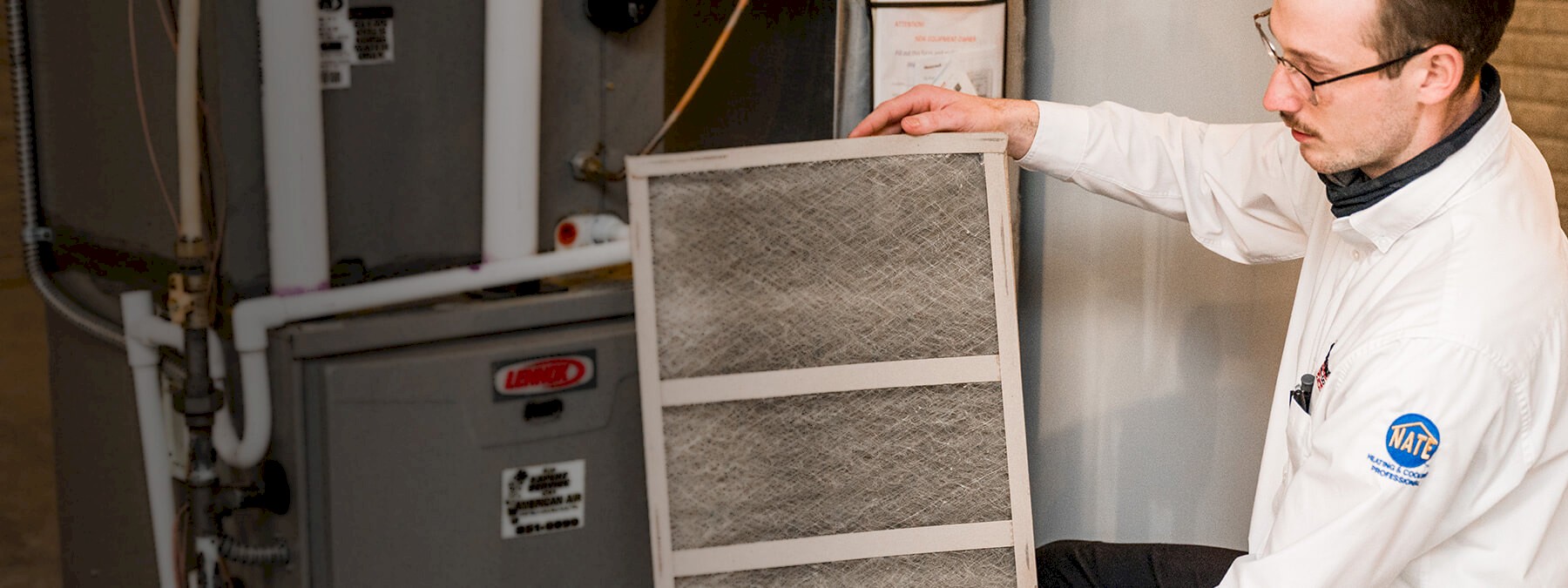
- Call 24/7
- Certified Techs
- 2 HR Service Window
- Service All Brands
- No After Hours Fees
- Financing Available
Frequently Asked Questions
Why is my furnace making strange noises?
Strange noises, like banging, rattling, or squealing, often indicate mechanical issues. These could range from loose parts and dirty burners to airflow problems. It’s best to have your furnace inspected by a professional to avoid further damage.
What causes a furnace to short cycle?
Short cycling happens when the furnace turns on and off too frequently, which can be caused by thermostat malfunctions, clogged filters, or an oversized furnace. This decreases efficiency and can lead to system breakdowns over time.
Why is my furnace not heating my home evenly?
Uneven heating could be the result of blocked vents, improper insulation, or a malfunctioning furnace. Poor airflow or a need for zoning may also cause temperature inconsistencies. An HVAC technician can pinpoint the exact issue.
How can I improve my furnace's energy efficiency?
Regular maintenance, like changing filters and getting tune-ups, helps your furnace work better. Upgrading to a programmable thermostat, sealing ducts, and making sure your insulation is good can also save energy.
Does Atlas Butler offer weekend or evening appointments?
Yes, Atlas Butler offers evening and weekend appointments to accommodate your schedule. We also provide emergency services 24/7 to ensure your heating system is always up and running when you need it most.
Will a new furnace save me money on energy bills?
Yes, a new high-efficiency furnace can lower your energy bills because it uses less energy to create the same amount of heat. Newer models are much more energy-efficient than older ones.
What should I do if my furnace stops working completely?
If your furnace stops working, check the thermostat, reset the furnace, and ensure the circuit breaker hasn’t tripped. If none of these solutions work, contact Atlas Butler for emergency repair services, available 24/7.
Call us at 1-800-FURNACE to schedule an appointment.

Financing Available
Find out if you qualify for financing to ensure your home is comfortable and your cost is manageable.
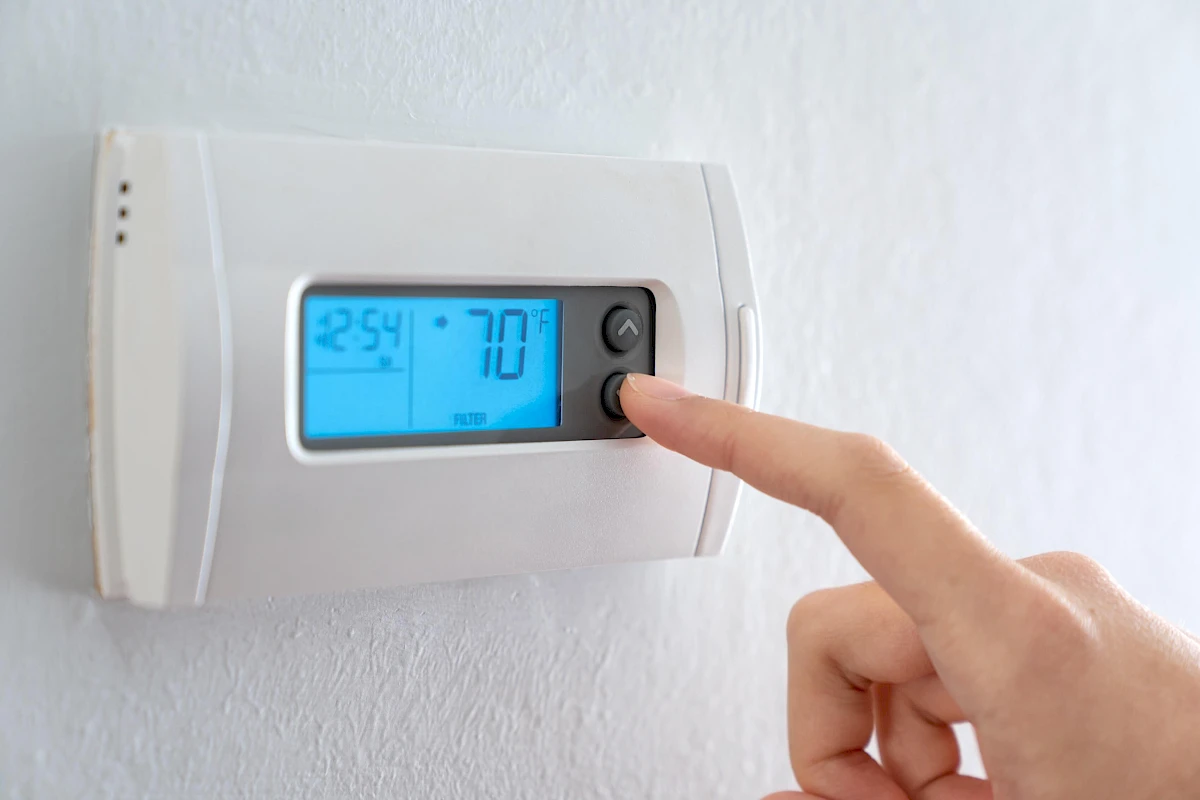
View Our Current Heating & Cooling Special Offers
Save on your Heating & Cooling Service calls with these special offers from Atlas Butler.
